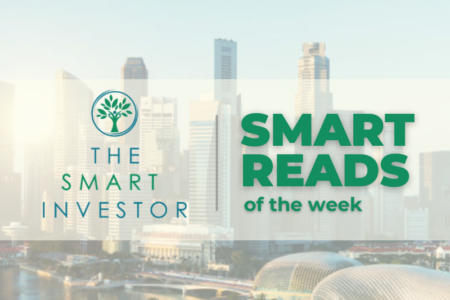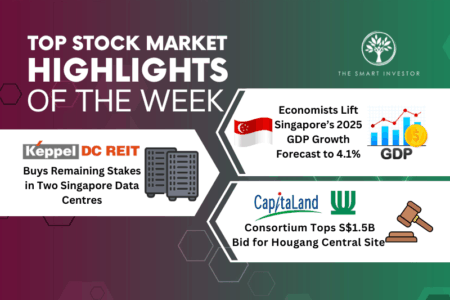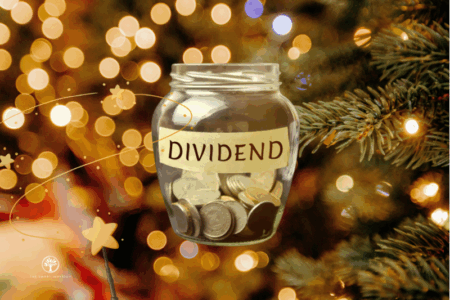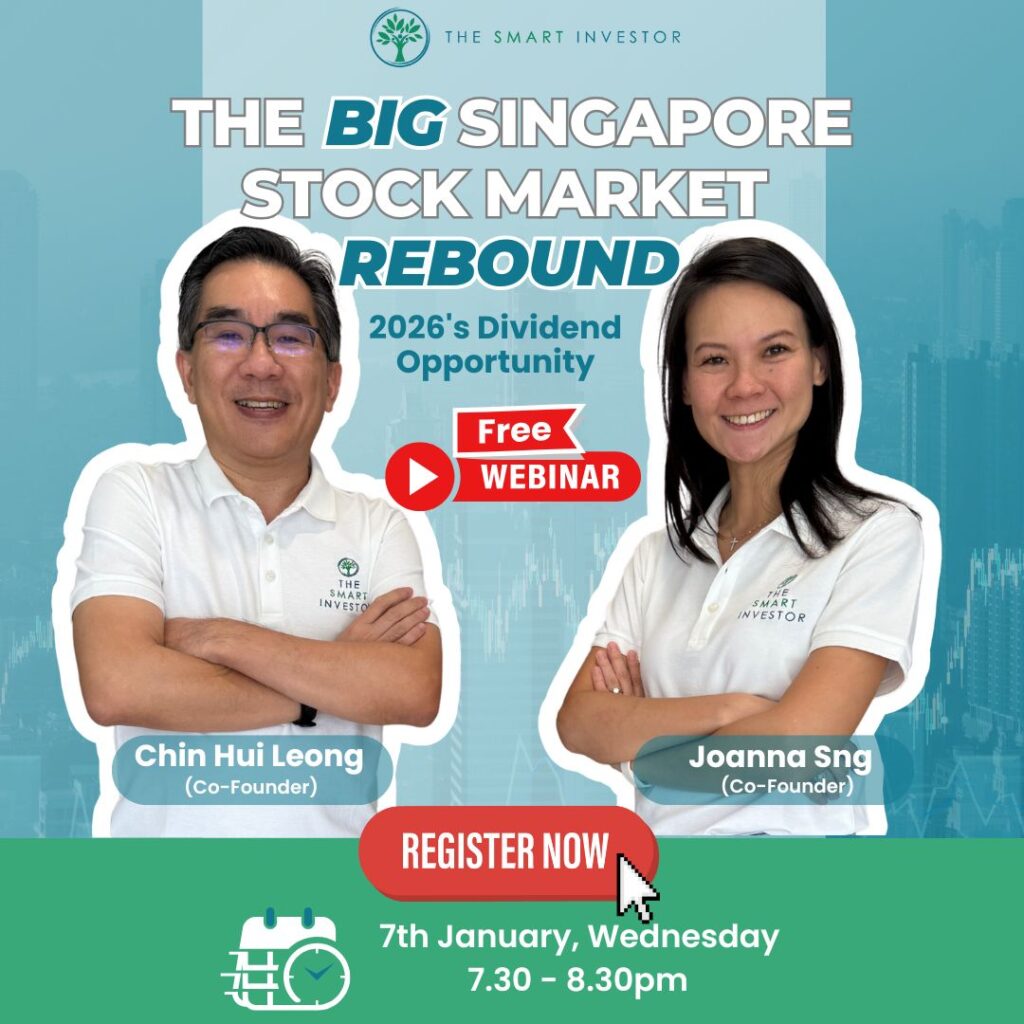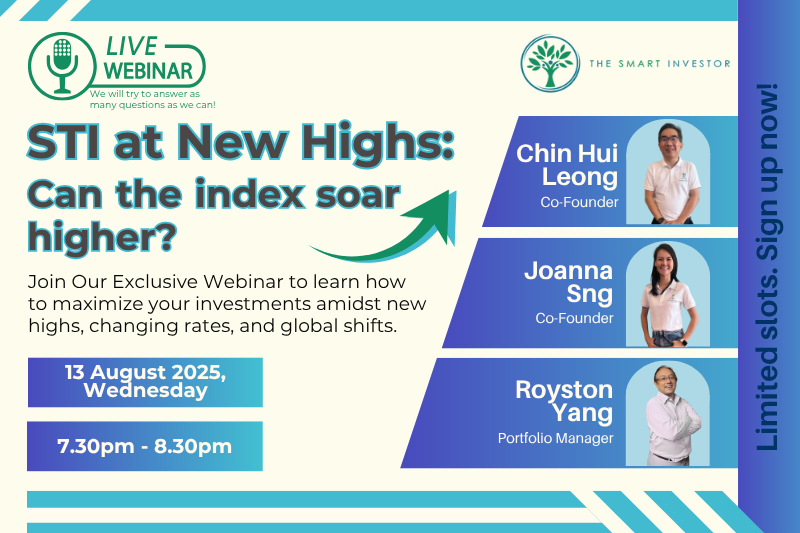Singapore’s Straits Times Index (SGX: ^STI) closed above 4,400 for the first time last Friday (3 October).
Investors are divided.
Some think the index can go even higher.
Others believe that the STI has run its course and is set to fall.
Who will be right and who will be wrong?
Despite their differences, many will agree that it’s a milestone that has investors asking: How much higher can this go?
But that’s actually the wrong question.
The Real Question Hidden in the Numbers
When the STI hits new highs, most investors fixate on predicting the peak.
Will the index hit 4,500 next?
Could it even reach 5,000?
Or should I sell before it drops back to 4,000?
But Smart Investors know that obsessing over index levels is like watching the scoreboard instead of the game itself.
The score tells you nothing about what’s actually happening on the field.
To understand where the STI might go, you need to look under the hood.
The Banking Trio’s Dominance
At the end of September 2025, DBS Group (SGX: D05), United Overseas Bank (SGX: U11) or UOB, and Oversea-Chinese Banking Corporation (SGX: O39) or OCBC accounted for over 50% of the STI’s weightage.
In other words, when you invest in the index, you’re essentially making a massive bet on Singapore’s three banks.
Half your money goes to the banking trio.
Here’s the rub: currently, the banks’ price-to-book (P/B) ratios are trading near or exceeding the high end of their historical ranges.
That’s not necessarily alarming, but it does mean there’s a fair bit of good news already priced in.
The saving grace? Dividends.
DBS, for instance, is expected to pay around S$3.00 per share in annual dividends, translating to a yield of approximately 5.7% at current prices.
That’s real money in your pocket, regardless of where the index goes next.
But there’s a complication: With interest rates falling, bank earnings will come under pressure.
Lower rates could mean smaller net interest margins, which might eventually lead to dividend cuts.
The Other Side of Falling Rates
Then again, what’s challenging for banks could be beneficial for REITs or real estate investment trusts.
Lower borrowing costs should improve REIT profitability, positioning real estate stocks as the next driver for the STI’s journey upward.
But does this mean you should sell your bank shares and buy REITs?
Not necessarily.
This is where building a portfolio is important.
The beauty of portfolio construction is that you don’t have to choose.
You can build a stable foundation with both banks and REITs, capturing dividends from established businesses while positioning yourself for different economic outcomes.
Beyond the Index: Where Growth Hides
Here’s what investors miss when they focus solely on the STI: the index only consists of 30 companies.
There’s an entire universe of opportunities beyond those 30 businesses.
Consider the middle ground — companies with market capitalisations above S$1 billion but not quite blue-chip status yet.
Take Sheng Siong (SGX: OV8), with its ambition to expand from 80 stores today to 120 stores over the next 10 to 15 years.
That’s a growth trajectory already in motion, visible to anyone willing to look.
For the adventurous ones among you, small-cap stocks under S$1 billion in market value offer a different hunting ground.
Yes, they’re riskier.
Yes, they’re more volatile.
But you don’t have to bet the farm.
Your Position Sizing Advantage
Here’s something that gives you an edge: you control how much you invest in each stock.
You can start small with an unfamiliar company — investing just enough to stay interested but not enough to lose sleep.
As you learn more about the business, as you watch how management executes, as you see quarterly results roll in, you can decide whether to add more.
This simple approach transforms uncertainty into an opportunity.
You’re not forced to be right immediately.
You can let your conviction grow alongside your position size.
Get Smart: The Dividend Advantage
Regardless of whether the STI marches to 5,000 or retreats to 4,000, there’s one element of your portfolio that keeps working: dividends.
Unlike capital gains that exist only on paper until you sell, dividends are real cash that hits your account.
You can spend them, save them, or — better yet — reinvest them into new opportunities.
Each dividend payment becomes seed capital for future investments.
Those investments generate their own dividends.
Do this often enough and long enough, and you’re building a snowball that rolls forward under its own momentum.
Eventually, that dividend stream may even replace your salary.
Hence, the real game is building a collection of businesses that pay you to own them, regardless of what the market does next.
Focus on dividends, diversify beyond the index, and let position sizing protect you as you learn.
If you’ve ever asked, “But what do I do with this info?” – read Get Smart, our weekly newsletter. It helps you connect the dots, so you understand what the stories mean for your portfolio. Join thousands of investors who rely on it for steady, grounded investing ideas. Subscribe now and sharpen your insight for free.
Follow us on Facebook, Instagram and Telegram for the latest investing news and analyses!
Disclosure: Chin Hui Leong owns shares of DBS Group, OCBC, Sheng Siong and UOB.


